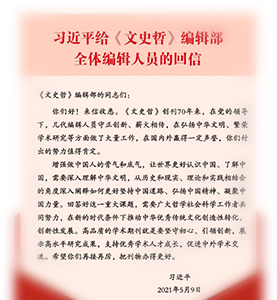心性化与唐宋元明中国思想的内转及其危机——以禅宗、内丹、理学为线索的思考 翟奎凤
佛教的传入深刻地影响了中国思想的演进,魏晋南北朝时期,人们普遍的生命困顿与心灵焦虑使得佛教蔚然盛行。汉唐时期,中国思想经历了从重视宇宙论,到重视本体论,再到重视心性论这一转变,心性论的凸显促使唐宋元明时期中国思想文化整体性内转。佛教本身就是一种内向型的关于心性的宗教,唐代禅宗的出现标志着佛教中国化运动的完成,佛教完全变成了一种关于内心如何觉悟的宗教。在佛教与禅宗心性论思想影响下,唐宋道教完成了由外丹向内丹的转型,宋明新儒学也从主张“性即理”到主张“心即理”,变成了一种注重内在超越的心性化儒学。内在化、心性化一定程度上增强了人们的个体化独立意识与人格的尊严意识,对人们思想的解放与自由、民主、平等意识的觉醒起到了推动作用,这在禅宗与泰州学派那里都有着鲜明体现。但是内在化心性思潮过于强大也在很大程度上遮蔽了人们对天道自然、机械技术的好奇与探索精神。明代中期以后,儒、佛、道在心性思想方面的汇通达到一种平衡,出现三教合一的局面,中国思想全面僵化。明末西洋历算击败中国传统历算,天学的失落意味着中国文化的深层次危机。晚明传入中国的西方天主教与自然科学都有明显的外向性,西方文化推动了中国思想的外转。在内外之间,寻求一种中道,是未来中国文化发展的方向。
The Internalization of Chinese Thought during the Tang, Song, Yuan, and Ming Dynasties and Its Crisis: A Reflection from the Perspectives of Chan Buddhism, Neidan, and Neo-Confucianism Zhai Kuifeng
The introduction of Buddhism into China had a great impact on the progress of Chinese thought; in particular, during Wei, Jin, the Southern, and the Northern Dynasties, the widespread life difficulties as well as civilian psychological anxiety led to the popularity of Buddhism. Starting from Han and Tang Dynasties, the growing Mind-Nature Theory promoted the overall internalization of Chinese thought during Tang, Song, Yuan, and Ming Dynasties. Buddhism itself, as a kind of internalized religion, concerns the nature of mind. The emergence of Chan Buddhism in Tang Dynasty marked the completion of the movement of sinicization of Buddhism. Consequently, Buddhism became a kind of religion in respect of how one could understand his mind. Under the influence of Buddhism and in particular Chan Buddhism, Daoism successfully transited from Waidan to Neidan during Tang and Song Dynasties. At the same time, Neo-Confucianism transited from “Nature being Li” to “Mind being Li”, becoming a kind of Confucianism which emphasized transcendent internalization; as a result, it strengthened civilian awareness of independence and human dignity and promoted civilian ideological emancipation as well as their awareness of freedom, democracy, and equality. These results were clearly shown in Chan Buddhism and Taizhou School. However, the overly strong internalized thought to some degree blocked civilian curiosity and explorations of the natural world and mechanical technology. After the middle period of Ming Dynasty, Confucianism, Buddhism, and Daism reached a balance on the Mind-Nature thought: they merged i


